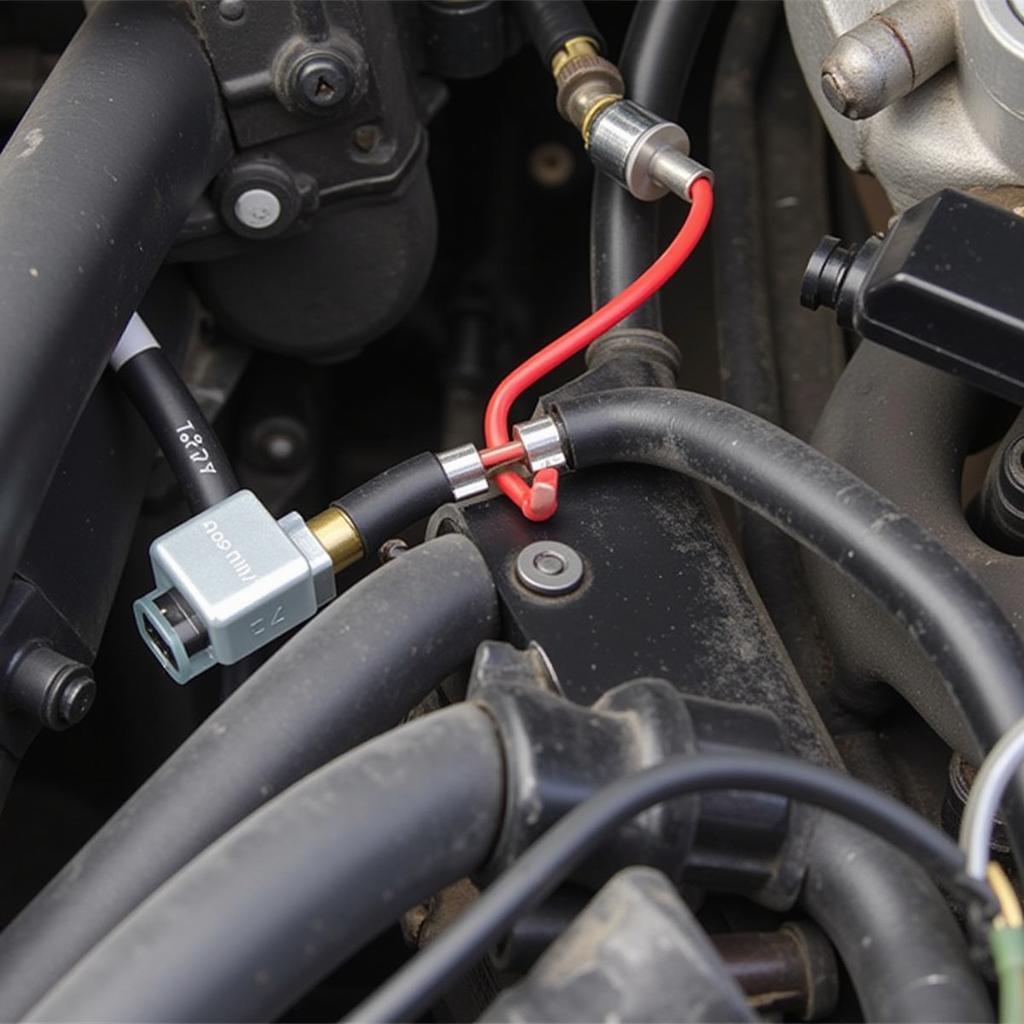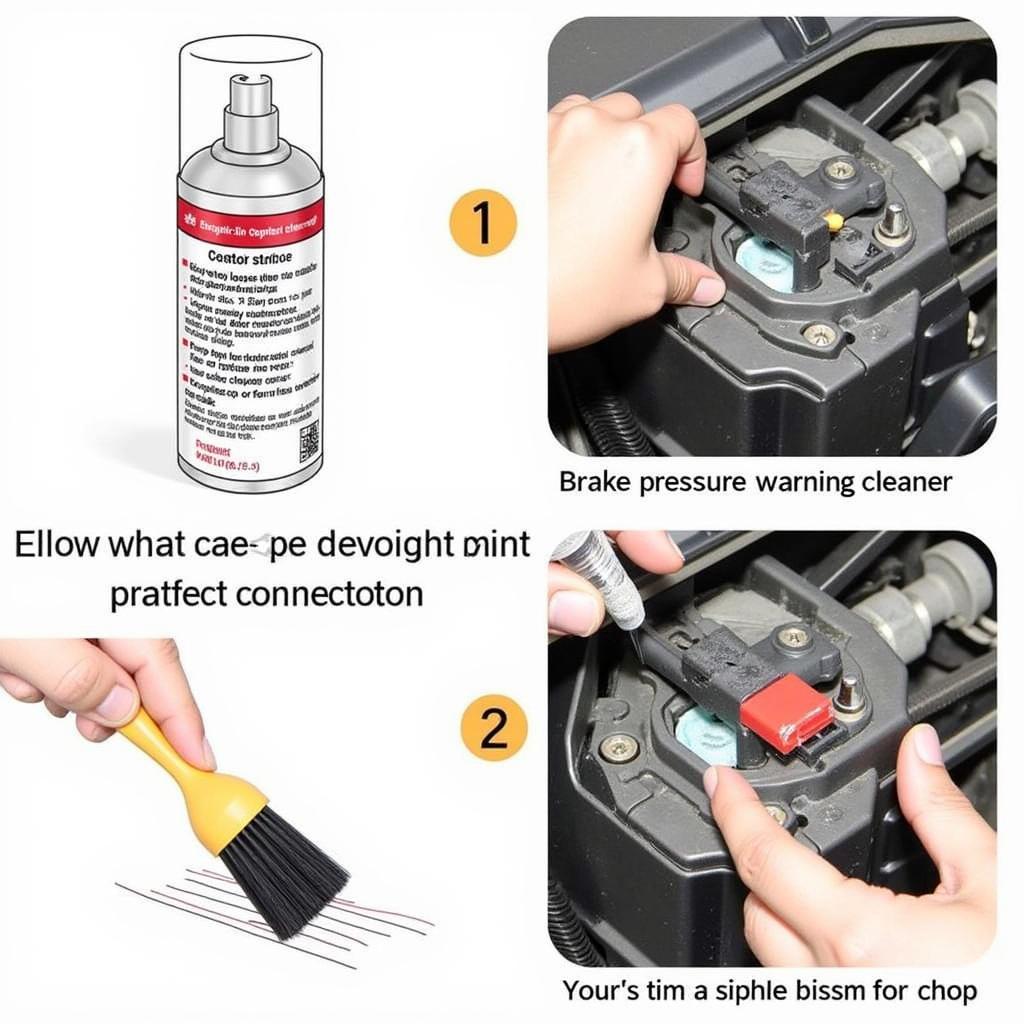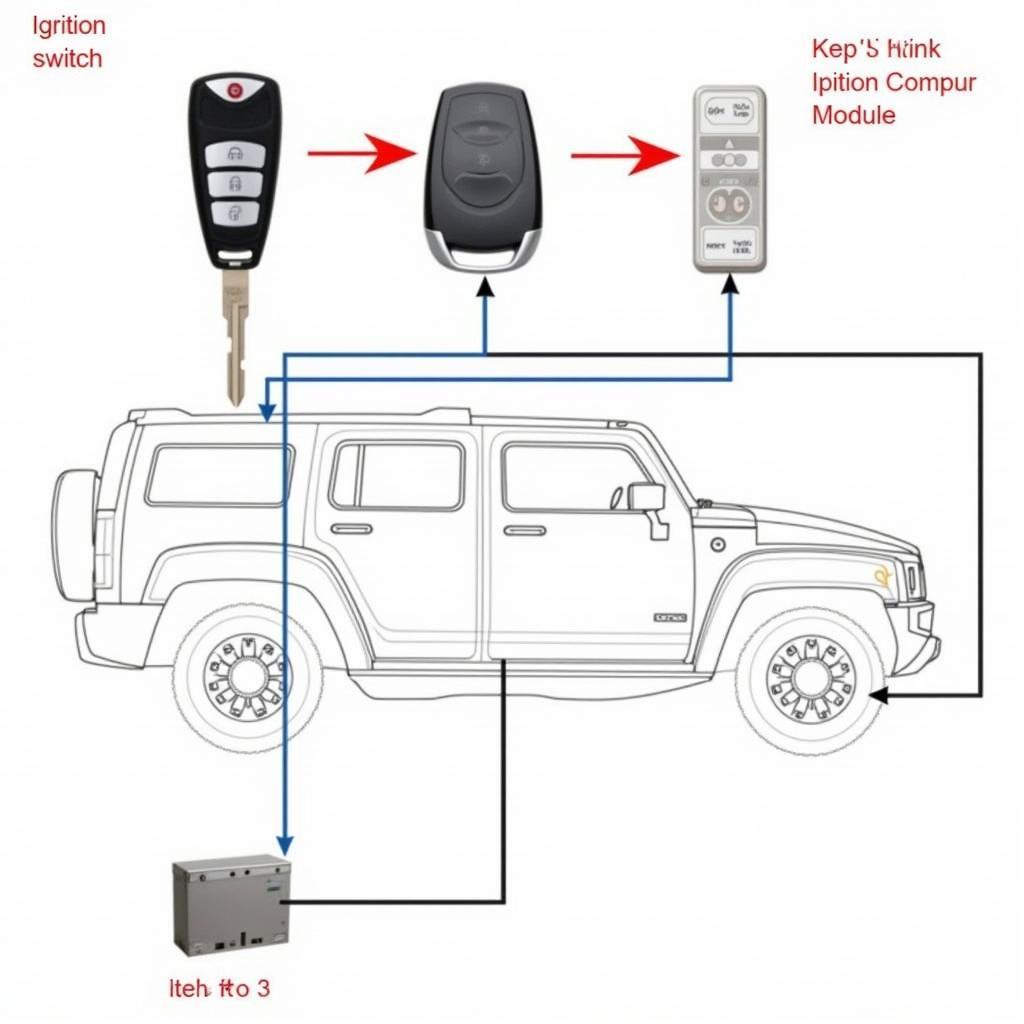The brake pressure warning switch connector plays a vital role in your vehicle’s safety system by alerting you to potential brake problems. A malfunctioning connector can lead to a range of issues, from a false warning light to a complete system failure. This comprehensive guide will delve into the common problems associated with the brake pressure warning switch connector, help you identify the symptoms, and provide you with the information you need to troubleshoot and fix the issue.
Understanding the Brake Pressure Warning Switch Connector
The brake pressure warning switch connector is a small but critical component that acts as a bridge between the brake pressure warning switch and your vehicle’s electrical system. Its primary function is to transmit signals from the switch to the dashboard, illuminating the brake warning light when it detects a drop in brake fluid pressure or a fault within the system.
 brake pressure warning switch connector location
brake pressure warning switch connector location
Common Causes of Brake Pressure Warning Switch Connector Problems
Several factors can contribute to issues with your brake pressure warning switch connector:
- Corrosion: Exposure to moisture, road salt, and grime can lead to corrosion on the connector’s terminals, disrupting the electrical connection.
- Damage: Physical damage from impact, vibration, or improper handling can break the connector’s housing or bend the terminals, leading to a faulty connection.
- Loose Connection: Over time, vibrations from driving can cause the connector to become loose, resulting in intermittent or complete signal loss.
- Worn-out Switch: While not directly related to the connector, a failing brake pressure warning switch can also cause similar symptoms and might need replacement.
 corroded brake pressure warning switch connector
corroded brake pressure warning switch connector
Recognizing the Symptoms of a Faulty Connector
Identifying the symptoms of a problematic brake pressure warning switch connector is crucial for early diagnosis and repair. Here are some common indicators:
- Illuminated Brake Warning Light: This is the most common symptom. A constantly lit brake warning light, even when there’s no apparent brake issue, could indicate a connector problem.
- Intermittent Brake Warning Light: If the light flickers or illuminates only under specific conditions, such as when driving over bumps or making turns, it suggests a loose or damaged connector.
- No Brake Warning Light: In some cases, a completely faulty connector might prevent the warning light from illuminating at all, even if there’s a genuine brake problem. This situation is particularly dangerous and requires immediate attention.
Troubleshooting and Fixing the Connector
Before attempting any repairs, it’s crucial to rule out other potential causes for the symptoms, such as low brake fluid or worn brake pads.
If you suspect a problem with the brake pressure warning switch connector, follow these troubleshooting steps:
- Locate the Connector: Consult your vehicle’s repair manual to identify the location of the brake pressure warning switch and its connector.
- Inspect the Connector: Carefully examine the connector for any signs of damage, corrosion, or loose connections.
- Clean the Connector: If you find corrosion, disconnect the battery and use electrical contact cleaner and a small brush to clean the connector’s terminals. Apply dielectric grease after cleaning to prevent future corrosion.
- Secure the Connection: Ensure the connector is securely fastened. If it’s loose, carefully push it back into place until you hear a click.
- Test the System: Reconnect the battery and start the engine. Check if the brake warning light functions correctly.
 cleaning brake pressure warning switch connector
cleaning brake pressure warning switch connector
Expert Insight: “Always disconnect the battery before working on any electrical components in your vehicle to avoid the risk of electrical shock or damage,” advises John Miller, a certified automotive electrician with over 20 years of experience.
When to Seek Professional Help
While cleaning and securing the connector is often a straightforward DIY task, certain situations warrant professional assistance:
- Severe Damage: If the connector is severely damaged, it’s best to have it replaced by a professional mechanic.
- Persistent Issues: If the problem persists even after cleaning and securing the connector, further diagnosis by a qualified mechanic is recommended.
- Lack of Expertise: If you’re uncomfortable working with electrical components, it’s always safer to seek professional help.
Conclusion
A properly functioning brake pressure warning switch connector is crucial for maintaining a safe and reliable braking system. Regularly inspecting and addressing any issues with this connector can save you from potentially dangerous situations on the road. Remember, if you’re ever in doubt about your vehicle’s braking system, consult a qualified mechanic immediately.
You can find more information about brake warning light issues here: bmw brake warning light stays on, brake pressure warning switch 1988 dodge b350.
FAQs
What happens if I ignore the brake warning light?
Ignoring a lit brake warning light can be extremely dangerous, potentially leading to brake failure and accidents. It’s crucial to address the underlying issue immediately.
Can I drive with a faulty brake pressure warning switch connector?
While you might technically be able to drive, it’s highly discouraged. A faulty connector compromises your braking system’s safety and puts you at risk.
How often should I check my brake pressure warning switch connector?
It’s a good practice to inspect the connector visually during routine maintenance checks or if you experience any brake-related issues.
Can a bad brake pressure warning switch connector drain my battery?
While unlikely, a faulty connector might cause a parasitic drain on your battery if it creates a short circuit.
Is replacing a brake pressure warning switch connector expensive?
The cost of replacing the connector itself is relatively inexpensive. However, labor costs might vary depending on your vehicle’s make and model and the mechanic’s hourly rate.
For issues with specific car models, you can check out: audi a3 rear brake light warning, parking brake warning light stays on 2002 mercury sable, 1977 chrysler new yorker brake warning light switch.

